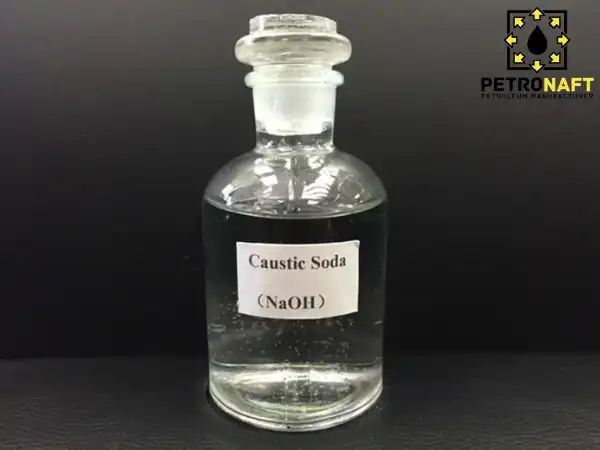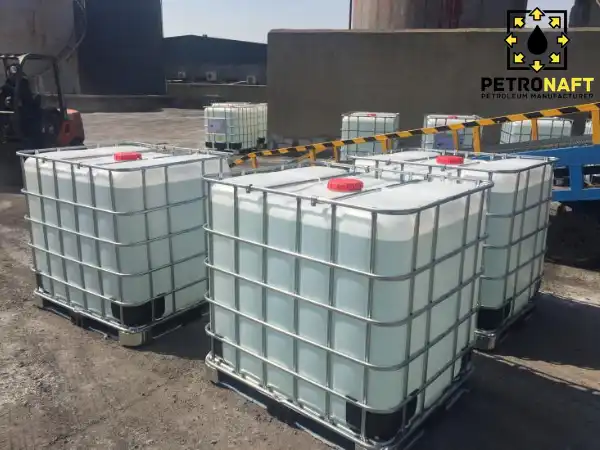CAUSTIC SODA LIQUID
Content Overview
INTRODUCTION OF CAUSTIC SODA LIQUID
Caustic Soda Liquid is an important and versatile chemical that is used in a variety of industries, including drilling. It is an alkali chemical with the molecular formula NaOH, often known as sodium hydroxide (NaOH). When the chemical comes into contact with the skin, eyes, or respiratory system, it may cause serious burns. It is utilized in a variety of industrial applications, including pulp and paper manufacture, textile manufacturing, soap production, and petroleum product refining.
Caustic soda liquid is a colorless, odorless, extremely corrosive, and slippery substance. It has a high pH of 13 and dissolves quickly in water, alcohol, and other solvents. The chemical is very reactive and may react with numerous acids, metals, and organic compounds, creating heat and releasing hydrogen gas.
WHAT IS CAUSTIC SODA LIQUID?
The inorganic compound caustic soda liquid, often known as sodium hydroxide, has the formula NaOH. It is a highly reactive and caustic chemical extensively utilized in a variety of industrial applications, including drilling. It is created by electrolysis of brine, a sodium chloride (NaCl) solution in water, and has several uses in sectors such as paper and pulp, textiles, soap and detergent, and petroleum refining.
CAUSTIC SODA LIQUID HISTORY
The use of caustic soda dates back to ancient times when it was produced by leaching the ashes of burned plants with water. The chemical was used in the production of soap and the manufacturing of textiles. The production of caustic soda through electrolysis was discovered in the 19th century, and since then, it has become a widely used chemical in many industrial applications.
CAUSTIC SODA LIQUID OTHER NAMES
Caustic soda liquid is also known by other names, including lye, sodium hydrate, and white caustic.
CAUSTIC SODA LIQUID TYPES
Caustic soda liquid is available in various grades, types, and forms, depending on its intended use. The most common grades include:
- Commercial grade: This grade is used in general industrial applications such as pulp and paper manufacturing, petroleum refining, and textiles.
- Chemical grade: This grade is used in specialty chemical applications such as pharmaceuticals and fine chemicals.
- Food grade: This grade is used in food processing applications such as the production of chocolate, cocoa, and caramel.
Different Applications Between Various Caustic Soda Liquid Grades, Types, and Forms:
The different grades, types, and forms of caustic soda liquid have different applications depending on their purity and concentration. The commercial grade is typically used in general industrial applications, while the chemical and food grades are used in specialty applications. The liquid form of caustic soda is preferred in most industrial applications due to its ease of use and handling.
CAUSTIC SODA LIQUID PRODUCTION
The electrolysis of brine, a solution of sodium chloride in water, yields caustic soda liquid. An electric current is sent through the brine solution to separate the sodium and chloride ions. The sodium ions interact with the hydroxide ions to generate sodium hydroxide, which is collected as a liquid. The procedure may be carried out using several electrolytic cells, such as the diaphragm cell, the mercury cell, and the membrane cell.
The diaphragm cell employs a porous diaphragm to divide the anode and cathode compartments, preventing the mixing of chlorine gas and sodium hydroxide. The cathode of the mercury cell contains mercury, and the sodium hydroxide is collected by interacting with water and generating a stable sodium amalgam. A selective membrane separates the anode and cathode compartments in the membrane cell, enabling only sodium ions to migrate to the cathode.
CAUSTIC SODA LIQUID SPECIFICATIONS
Caustic soda liquid has specific chemical and physical properties that make it suitable for various industrial applications. The following are some of the common specifications of caustic soda liquid:
- Chemical Formula: NaOH
- Molecular Weight: 40.00 g/mol
- CAS Number: 1310-73-2
- Density: 1.54 g/cm³
- Melting Point: 318 °C
- Boiling Point: 1388 °C
- Solubility in Water: 111 g/100 mL (at 20 °C)
CAUSTIC SODA LIQUID CHEMICAL FORMULA, CAS NUMBER, AND HS CODE:
The chemical formula for caustic soda liquid is NaOH, and its CAS number is 1310-73-2. The Harmonized System (HS) code for caustic soda liquid is 281511.
CAUSTIC SODA LIQUID PROPERTIES
Caustic soda liquid has several chemical and physical properties that make it suitable for various industrial applications. The following are some of the common properties of caustic soda liquid:
- Corrosive: Caustic soda is highly corrosive and can cause severe burns on contact with the skin, eyes, and respiratory system.
- Reactive: Caustic soda is highly reactive and can react with various acids, metals, and organic materials, generating heat and releasing hydrogen gas.
- Soluble: Caustic soda is highly soluble in water and other solvents, making it easy to handle and use.
- Alkaline: Caustic soda has a high pH value of 13, making it a strong base.
CAUSTIC SODA LIQUID ADVANTAGES
Caustic soda liquid has several advantages that make it a preferred chemical in various industrial applications. The following are some of the advantages of using caustic soda liquid:
- Versatile: Caustic soda liquid has a wide range of applications in various industries, including the drilling industry.
- Cost-effective: Caustic soda liquid is relatively inexpensive, making it a cost-effective option for various industrial applications.
- Easy to handle: Caustic soda liquid is available in a liquid form, making it easy to handle and use.
- Effective: Caustic soda liquid is highly reactive and effective in various industrial processes.
CAUSTIC SODA LIQUID SAFETY TIPS
Caustic soda liquid is a highly corrosive and reactive chemical that can cause severe burns on contact with the skin, eyes, and respiratory system. It is essential to observe the following safety tips when handling and using caustic soda liquid:
- Wear protective clothing, including gloves, safety goggles, and a face shield.
- Avoid direct contact with caustic soda liquid and its vapors.
- Use caution when diluting caustic soda liquid with water, as it can generate heat and cause splattering.
- Store caustic soda liquid in a cool, dry, and well-ventilated area away from incompatible materials.
THE WORLD’S CAUSTIC SODA LIQUID PRODUCING COUNTRIES
The major producing countries of caustic soda liquid include China, the United States, India, Iran, Japan, and Germany. These countries account for a significant share of the global production of caustic soda liquid.
THE WORLD’S CAUSTIC SODA LIQUID IMPORTING COUNTRIES
The major importing countries of caustic soda liquid include the United States, China, Japan, South Korea, and India. These countries import large quantities of caustic soda liquid for various industrial applications. The demand for caustic soda liquid in these countries is driven by the growing need for chemical manufacturing, water treatment, and other industrial processes.
THE WORLD’S CAUSTIC SODA LIQUID EXPORTING COUNTRIES
The major exporting countries of caustic soda liquid are Iran, the UAE, Turkey, and China. These countries export caustic soda liquid to various parts of the world, including Asia, Europe, and North America. The export of caustic soda liquid from these countries is driven by the low production costs and the availability of raw materials in these regions.
CAUSTIC SODA LIQUID PRICE
The price of caustic soda liquid is affected by various factors, including the cost of production, supply and demand dynamics, transportation costs, and government regulations. The cost of production of caustic soda liquid is influenced by the price of raw materials such as salt and electricity, which can fluctuate depending on market conditions. Supply and demand dynamics also play a significant role in determining the price of caustic soda liquid. For example, an increase in demand for caustic soda liquid can lead to a rise in its price, while an oversupply can lead to a drop in price. Transportation costs also affect the price of caustic soda liquid, as it is often transported in large quantities over long distances. Finally, government regulations can impact the price of caustic soda liquid, as changes in environmental regulations or trade policies can affect the cost of production and transportation.
Understanding Iran’s Caustic Soda Price: A Must-Read Comprehensive Guide to Improve Your Knowledge
Cost of Caustic Soda in Iran: Analysis
Understanding Global Asphalt Prices: A Must-Read Comprehensive Guide for Better Comprehension
CAUSTIC SODA LIQUID APPLICATIONS
Caustic soda liquid has a wide range of applications across various industries. It is primarily used as a strong base in chemical manufacturing processes. Some of the common applications of caustic soda liquid include:
- Pulp and Paper Industry: Caustic soda liquid is used in the pulp and paper industry to break down lignin and separate cellulose fibers from wood.
- Textile Industry: Caustic soda liquid is used in the textile industry to treat fabrics and remove impurities.
- Water Treatment: Caustic soda liquid is used in water treatment to adjust the pH levels and remove contaminants from water.
- Petroleum Industry: Caustic soda liquid is used in the petroleum industry to remove sulfur compounds from crude oil and refine petroleum products.
- Soap and Detergent Industry: Caustic soda liquid is used in the soap and detergent industry to produce various cleaning products.
- Here are some more specific uses of liquid caustic soda (sodium hydroxide) in drilling operations:
- Wellbore cleaning: Liquid caustic soda can be used to clean the wellbore and remove any buildup of solids or other materials that may have accumulated during drilling operations. It is effective at breaking down and dissolving organic materials, such as oils and greases, as well as inorganic compounds like minerals and scale.
- Mud conditioning: Liquid caustic soda can be used to adjust the pH levels of drilling mud, which is a mixture of various fluids, clays, and additives that is used to lubricate and cool the drill bit and carry the drilled cuttings to the surface. It can be used to raise the pH levels of the mud to help dissolve certain minerals or lower the pH levels to prevent clay swelling.
- Cementing operations: Liquid caustic soda can be used in cementing operations to help clean and prepare the wellbore for cementing, and to improve the bond between the cement and the formation. It can be used to remove any contaminants that may interfere with the cementing process.
- Corrosion control: Liquid caustic soda can be used to prevent corrosion in drilling equipment and pipes by neutralizing any acidic substances that may be present. It can also be used to clean and remove rust or other corrosion products from metal surfaces.
CAUSTIC SODA LIQUID PACKING
Caustic soda liquid is typically packaged in bulk containers, including tanker trucks, railcars, IBC, and drums. The packaging of caustic soda liquid is designed to ensure safe transportation and storage. The containers used for packaging should be made of materials that are resistant to corrosion and leakage.
Caustic Soda Liquid Transportation and Storage:
Caustic soda liquid is transported in bulk quantities over long distances using tanker trucks, railcars, and barges. The transportation of caustic soda liquid requires special precautions to ensure safe handling and storage. The containers used for transportation should be made of materials that are resistant to corrosion and leakage. The transportation of caustic soda liquid should also comply with various regulations and standards set by regulatory bodies. In addition, caustic soda liquid should be stored in a cool, dry, and well-ventilated area, away from incompatible materials such as acids and oxidizing agents. Proper storage and handling of caustic soda liquid can help prevent accidents and ensure the safety of workers and the environment.




